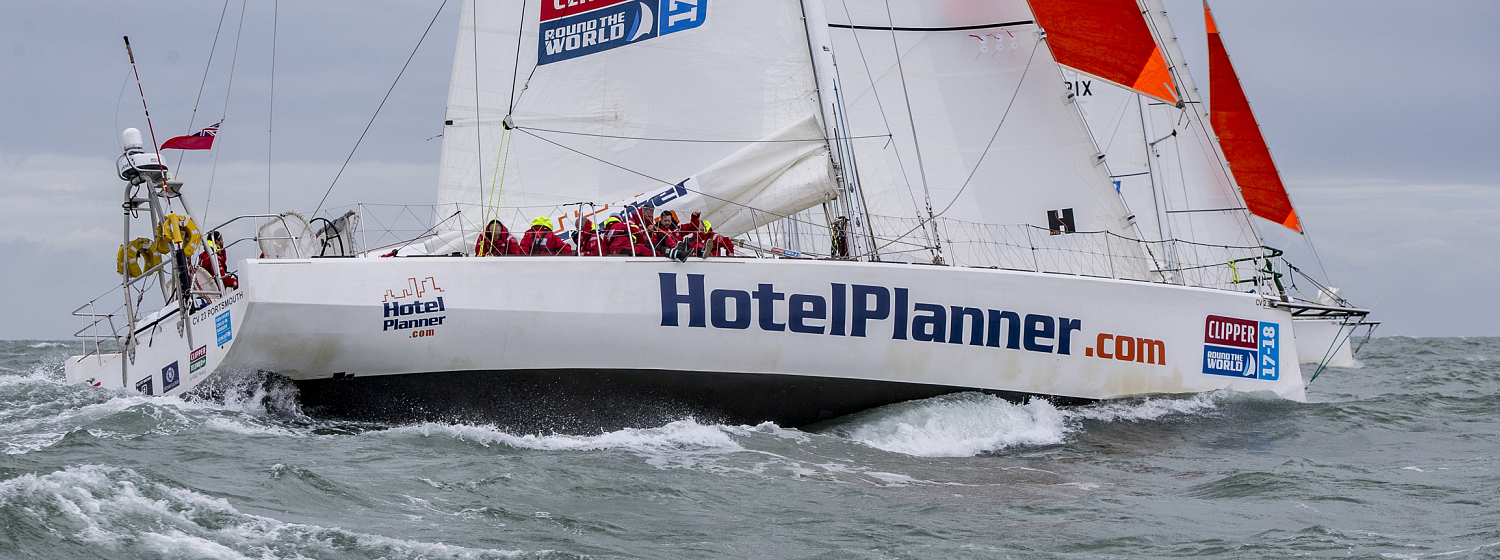Race 4 - Day 8
Crew Diary - Race 4 Day 8: Fremantle to Sydney
10 December
Not quite hitting the mark
The past few days have been dominated by one feeling: not quite making the bearing to waypoint. I guess that's how it is when you are going with the wind. You cannot just make it blow from the direction you would like it to, instead you have to make the best of what's there. I'm sure somewhere in there is a life-lesson. So there we are, in the southern ocean, edging ever closer to our south-tip-of-Tasmania mark. It slowly feels like we have been doing this forever.
Here is a usual watch rundown these days:
The very moment you step on deck, the southern ocean welcomes you with a two to five bucket load of cold salt water. That is usually followed by a muster call and then a short brief for the new crew coming up then the helmers their handover brief from their off going colleagues. The wind is one parameter but it is the rolling waves that seem now affect the most. The nice set of three waves that first that takes you in the direction you want to go followed quickly by two that definitely do not want you to achieve your prime objective, making as much ground as you can at best speed in the right direction. We have all seen some huge waves, enjoyed some surfing and had that amazing feeling of a 70ft yacht accelerating under our feet. When you look behind you it doesn't seem possible that you can helm in these conditions. Another brief is on the sails, winches, and ropes and their current arrangement on deck. Especially in the dark nights of the southern ocean, those information can be vital. After talking about the deck and helm, we then move on to the bigger picture. That usually means the weather around us, whether there are other boats, and finally the overall strategy. These days the overall strategy is much of the same, best course to the mark.
Then, every other watch we gybe. Getting the boat ready for a gybe does not only include the ropes that have to be set up on deck. While the right ropes on the right winches are obviously important to turn the boat around, its usually the trivial yet also essential things that keep us most bust. Those include making sure that everyone asleep is safely strapped to their bunks and is not in risk of falling out of it during the gybe. And it also includes that all the stuff lying around in the saloon area cannot go airborne. Speaking from personal experience, not matter how hard you try there is always that one item you miss, which then during the gybe comes flying right at you.
During daylight hours, and if the winds and the sea state allow it, we get the spinnaker up. That usually means a busy foredeck. You can see the bowman or woman busily beavering away, dragging sails, balancing in the heavy seas, and attaching the tack of the sail to the bowsprit, the clew to the sheets, and finally the halyard to the head of the sail. With lots of ropes around, this can sometimes turn into somewhat of a puzzle. After a while it becomes almost second nature though. Then, when the pit is ready we are finally ready to hoist.
The hard part of flying a spinnaker usually is taking it down again. With all the fun you are having, you often forget to check your wind speed indicators, and the sooner you know you find yourself in about 40 knots of wind. Then it becomes quite the wrestle to get it down. It then takes about four people pulling with all their strength, and keeping the sail as close together as possible. If the sail catches wind during the drop, it cal blow up again and you end up having to do everything all over again. Eventually, with combined efforts the crew will be able to stuff the kite down the companionway hatch, where it is laid out for wooling.
Usually, these evolutions and the helming in between keep you busy for four to six hours, and once you are done you feel ready for some food and a good sleep.
As I do now...
